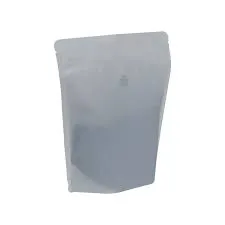- Afrikaans
- Albanian
- Amharic
- Arabic
- Armenian
- Azerbaijani
- Basque
- Belarusian
- Bengali
- Bosnian
- Bulgarian
- Catalan
- Cebuano
- chinese_simplified
- chinese_traditional
- Corsican
- Croatian
- Czech
- Danish
- Dutch
- English
- Esperanto
- Estonian
- Finnish
- French
- Frisian
- Galician
- Georgian
- German
- Greek
- Gujarati
- haitian_creole
- hausa
- hawaiian
- Hebrew
- Hindi
- Miao
- Hungarian
- Icelandic
- igbo
- Indonesian
- irish
- Italian
- Japanese
- Javanese
- Kannada
- kazakh
- Khmer
- Rwandese
- Korean
- Kurdish
- Kyrgyz
- Lao
- Latin
- Latvian
- Lithuanian
- Luxembourgish
- Macedonian
- Malgashi
- Malay
- Malayalam
- Maltese
- Maori
- Marathi
- Mongolian
- Myanmar
- Nepali
- Norwegian
- Norwegian
- Occitan
- Pashto
- Persian
- Polish
- Portuguese
- Punjabi
- Romanian
- Russian
- Samoan
- scottish-gaelic
- Serbian
- Sesotho
- Shona
- Sindhi
- Sinhala
- Slovak
- Slovenian
- Somali
- Spanish
- Sundanese
- Swahili
- Swedish
- Tagalog
- Tajik
- Tamil
- Tatar
- Telugu
- Thai
- Turkish
- Turkmen
- Ukrainian
- Urdu
- Uighur
- Uzbek
- Vietnamese
- Welsh
- Bantu
- Yiddish
- Yoruba
- Zulu
How to Accurately Determine Length and Width of Objects in Various Contexts
How Do You Measure Length and Width?
Measuring length and width is fundamental in various fields, from construction and engineering to everyday tasks such as home decoration and gardening. Understanding how to measure these dimensions accurately is essential for ensuring proper fit, alignment, and functionality of objects. This article explores the methods, tools, and techniques used in measuring length and width effectively.
Understanding Length and Width
Length refers to the measurement of something from end to end, while width (or breadth) is the measurement of something from side to side. Together, these dimensions are crucial in defining the size of objects. For instance, when determining the amount of fabric needed for a sewing project, knowing both the length and width allows for proper planning and execution.
Tools for Measurement
Several tools can be used for measuring length and width, each suitable for different tasks
1. Tape Measure This flexible measuring tool is one of the most common as it can easily conform to the shape of objects. Tape measures typically have both inches and centimeters, making them versatile for various applications.
2. Ruler Rulers are rigid and generally less flexible than tape measures. They are suitable for measuring small lengths or widths, such as in arts and crafts or school projects. A standard ruler usually has markings for both imperial and metric systems.
3. Caliper For more precise measurements, particularly in mechanical engineering or carpentry, a caliper can be used. Calipers can measure internal and external dimensions as well as depths, providing a high degree of accuracy.
4. Measuring Wheel This tool is particularly useful for measuring long distances, such as a hallway or a field. The wheel rolls along the surface, providing a direct way to measure larger lengths repeatedly with accuracy.
how do you measure length and width

5. Laser Distance Measurer A modern tool that uses a laser beam to measure distances quickly and accurately. These devices are particularly useful in construction and real estate, allowing for fast measurements over long distances without physical contact.
Techniques for Accurate Measurement
While using the right tools is crucial, employing the correct techniques is equally important to ensure accuracy. Here are some tips to follow
1. Choose the Right Tool for the Task Depending on the size and type of object, select a tool that’s appropriate for the measurement. A tape measure is ideal for wider objects, while a ruler may suffice for smaller ones.
2. Calibrate Your Tools Ensure that your measuring tools are calibrated correctly. For example, some tape measures may have a slight error if they are old or worn. Check the zero point and make sure it aligns with the start of the measurement.
3. Use Consistent Units Stick to either metric or imperial measurements throughout the process to avoid conversion errors. Mixing units can lead to confusion and inaccuracies.
4. Measure at Eye Level When taking measurements, especially with a tape measure, ensure that you are at eye level to avoid parallax errors, which occur when the measurement is taken from an angle rather than straight on.
5. Record Measurements Immediately Always write down your measurements immediately to prevent forgetting or misremembering them. This practice is essential for maintaining accuracy, especially in long projects.
Conclusion
Measuring length and width is a critical skill across a variety of contexts. By using the appropriate tools and techniques, anyone can achieve precise measurements necessary for successful projects, whether they are crafting a piece of furniture, laying out a garden, or undertaking a construction task. Mastery of this skill improves efficiency and reduces the likelihood of costly mistakes, ultimately leading to better outcomes in all measuring endeavors.













